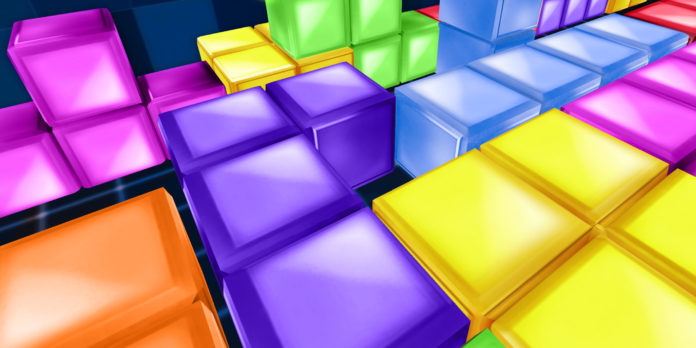
There’s a good chance you’ve played Tetris at some degree, and even if haven’t, you’ve definitely had the topic music stuck in your head.
Beloved by children of all ages, the simple puzzle play takes seconds to learn, but you’ll burn countless hours getting good at it. Fortunately, Tetrishas some surprising advantages, which you’ll learn when we collect of interestingTetris facts.
20 fascinating Tetrisfacts
1) Tetris was developed in 1984 by a Russian
TetriscreatorAlexey Pajitnov created Tetris while working a computer programmer at the Soviet Academy of Sciences Computer Center in Moscow in 1984. Tasked with programming computer game that would test the capabilities of the U.S.S.R.s computer equipment, he spent his spare time daydream up puzzle plays.
 Photo via Tetris.com
Photo via Tetris.com
Tetris creator Alexey Pajitnov
2) There’s a name for those working weirdTetrispieces
Pajitnov was influenced bypentominospuzzles when designingTetris. Pentominosshapes created by mixing five blockshave been used in math plays since 1907. There are 12 shapes of pentominos, but only seven of them are stated in Tetris. In a standard pentominos puzzle, players must fit the shapes into a rectangular container without any overlap or gaps. Audio familiar?
 Photo by R.A. Nonenmacher ( CC-BY)
Photo by R.A. Nonenmacher ( CC-BY)
Tetrisuses what’s known as tetrominoes, a special case of pentominoswith four elements.
3) The playing field in Tetris is called the Matrix
The Matrix is made up of a 10 -by-2 0 grid( and has nothing to do with Keanu Reeves ).
4) “Tetris” is a combination of Greek and the creators favorite sport
Tetris’nameis a portmanteau, where the voices and meanings of two terms are brought together to make a new word. Tetris comes from the Greek word tetra, entailing four, and tennis, inventor Pajitnovs favorite sport.Each Tetris piece is made up of precisely four blocks, easily explaining Pajitnov’srational for the first part of Tetris’s name. The game’s similarities to tennis are not as immediately apparent, beyond its addictive qualities and constantly changing defensive moves.
 Photo via Damian Yerrick ( CC-BY)
Photo via Damian Yerrick ( CC-BY)
5) Tetris was designed to induce computers seem less intimidating
Pajitnov wasn’t just setting out to make a game when he developed Tetris; he was trying to show people computers could be easy to learn. In a 2014 interview with CNBC, Pajitnov mentioned ,” Tetris was lucky to be a messenger for early clients of the computer. It’s not just a sophisticated thing to deal with numbers and spreadsheets, but likewise a fun plaything to play-act a simple and engaging play. It is essential for people to feel better about the computer. That was a very important role for Tetris at that time .”
 Photo by Alexey Pajitnov ( CC-BY)
Photo by Alexey Pajitnov ( CC-BY)
6) The play originally spread through piracy
When Tetris was originally developed, Pajitnov was working for the Russian government constructing computer programs. He originally wanted to publish the game but didn’t know how and obsessed he’d be punished by the government for doing so. Acopy was smuggled to Hungary, nonetheless, andunauthorized versions begin popping up. Pajitnov granted his rights to the Soviet Union for 10 times so itcould license official versions. Without piracy, Tetris might have stayed an oddball anomaly on a Soviet computer.
7) Even the original NES version of Tetris was technically a pirated port
The original NES version of Tetris was released by a company called Tengen, owned by Atari. Theres simply one difficulty: Atari didnt has every right to to create a home version of the game. Rather, itslicense was forarcade versions of Tetris. It turns out Atari had asked Pajitnov for granted permission to freeing a home console version of the game instead of the Russian government.
While Atari was trying to sort out the details, the U.S.S.R. granted licensing rights for Tetris to Nintendo. Tengen and Atari sued Nintendo claiming ithad the rights to distribute itsversion of Tetris. Tengen lost the occurrence in June 1989, with a U.S. district tribunal magistrate issuing an injunction stopping further sales of their Tetris. The title had been on shelves for amonth when the ordering came down, during which day about1 00,000 prints were sold.
8) The Tengen version of Tetriswas actually better
The recall of the Tengen release was a minor tragedy for video game fans because it was superior to Nintendos version in many ways. In addition to the standard play, Tengen’s release featured a competitive mode the NES version absence and multiple difficulty levels.
9) Tetris’screator didnt get royalties until 1996
Despite Tetris’swild popularity, including being bundled with the Game Boy in the late’ 80 s, Pajitnov never ensure a dime from sales of Tetris until 1996. According to an interview with the Guardian, Pajitnov gave his rights to the software to the Russian government for 10 times, constructing it one of the first parts of software exported by the Soviet Union. In 1996, he founded the Tetris Company, which now owns the human rights of Tetris worldwide, licensing the game out to third party.
10) Nintendo almost rejected Tetris forGame Boy
When Henk Rogers of Bullet Proof Software first pitched Tetrisfor the Game Boy to Nintendo, Nintendodidn’t think it would work becauseit wouldn’t appeal to little sons. Rogers answered,” If you want little boys to play-act Game Boy, pack in Mariobut if you want everyone to play Game Boy, pack in Tetris .” Nintendo shipped more than 35 million copies of Tetris with the original Game Boy.
READ MORE 😛 TAGEND
15 realities you didnt know about Mario Kart








